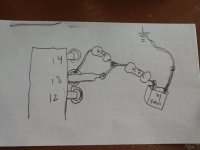comradehoser
Well-known member
I'm starting to suspect something might be amiss in the blend part of my circuit. But I am prone to thinking there is a problem with a pedal when it's just the way the pedal is supposed to be.
Full CW is very quiet, and the blend kind of drops off to clean pretty quickly after about 3:00, clean signal is fairly non-existent before.
Is this consistent with what you have?
Full CW is very quiet, and the blend kind of drops off to clean pretty quickly after about 3:00, clean signal is fairly non-existent before.
Is this consistent with what you have?



